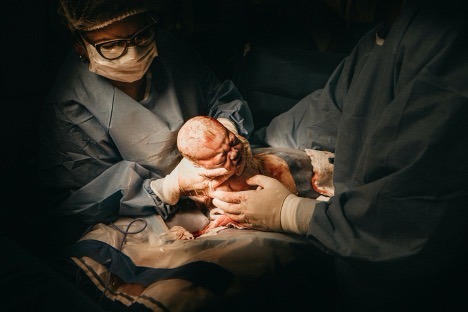
It is very common for babies to experience birth injuries caused by the natural pressure of labor. Some of these injuries do not require treatment and heal over time. However, some babies can suffer from nerve damage or broken bones. According to the Centers for Disease Control (CDC), 7 out of every 1000 babies suffer from severe injuries during birth. The statistics may not seem alarming, but they can be life-changing for children and parents affected.
Medical negligence and malpractice are common problems. A website, StatPearls, stated that approximately 0.4 million hospitalized patients experience some form of harm at the hands of the medical staff that could be prevented. Although, the advancement of technology has reduced the risks of birth injuries as prenatal assessments have improved and doctors opt for a cesarean if they see risk through natural birth. But any nerve damage that hasn’t been taken care of immediately or is ignored at the time of birth shows negligence on the part of the medical staff present at the tie of labor. These damages can lead to many long-term health issues in babies like cerebral palsy, Erb’s palsy, or other delayed developmental problems.
If your child has cerebral palsy, you can file a cerebral palsy lawsuit to seek compensation for the emotional, physical, and financial turmoil your family has to endure. Consulting with birth injury lawsuit specialists will increase your chances of a favorable settlement.
That said, being aware of birth injury and its types can help you identify these conditions early on and discuss your case with doctors and lawyers. So, we’ve listed down some of the apparent signs you, as a parent, should look out for. If you notice any of these, we recommend visiting your pediatrician ASAP.
Immediately after birth
There are a few signs that become apparent immediately after childbirth. Your doctor should instantly work to minimize further damage that may occur. If your doctor fails to recognize and address these signs, they can be held responsible for medical malpractice.
- Bruising or swelling on your baby’s face, head, or shoulders
- Failure to begin breathing after birth
- Limp arms, indicating a lack of muscle tone
- Hand curled into a claw-like shape
- Low oxygen levels and heart rate
- Being pale or turning blue
- Difficulty feeding or swallowing
- Drooling excessively
- Arched back when crying
- Irritability
- Favoring one side of the body
- Slow breathing
- Breathlessness or rapid breathing
- Seizures.
Up till the age of 1
Birth conditions like cerebral palsy will not show signs until later in the child’s development process. Parents and pediatricians need to watch any of these signs listed below and take prompt action.
- One month old – Limbs seem stiff or loose, barely move the limbs, or do not blink when a bright light shines in the eyes.
- Three months old

Hey welcome to my blog . I am a modern women who love to share any tips on lifestyle, health, travel. Hope you join me in this journey!

Speak Your Mind